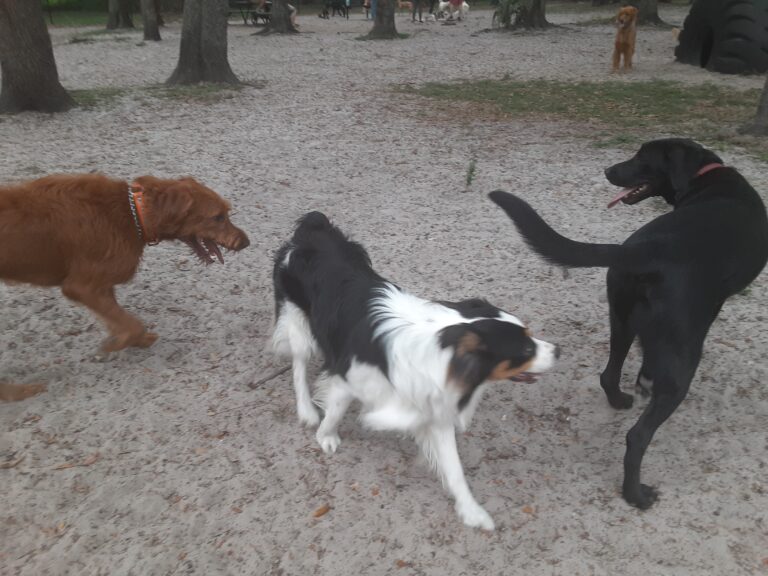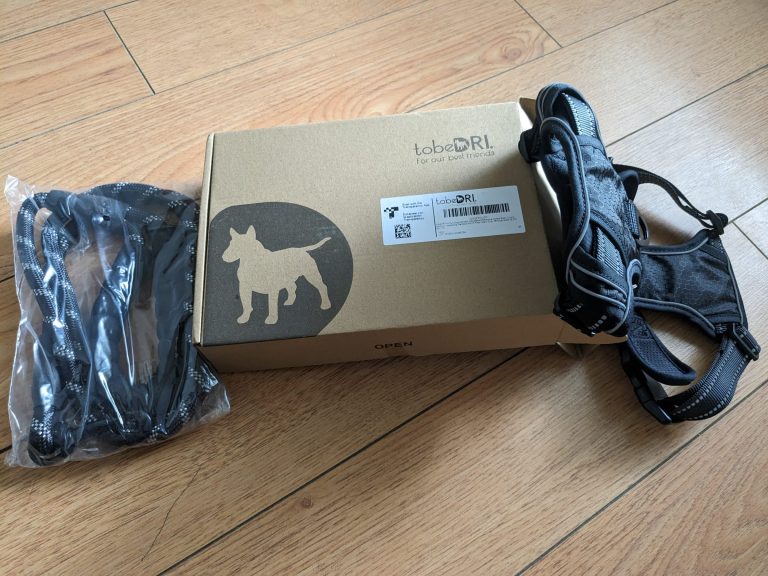Harnesses and collars
Whether it’s better to have a dog harness or a dog collar depends on several factors, including your dog’s size, breed, behavior, and specific needs. Both harnesses and collars have their advantages and disadvantages, so it’s important to consider your individual circumstances when making a decision. Here are some factors to consider:

Dog Harness
Safety: Using a dog harness is generally considered safer, especially for dogs prone to pulling on the leash. When a dog pulls against a collar, it can exert concentrated pressure on their neck, potentially leading to injuries such as tracheal damage or eye issues. In contrast, a harness distributes the pulling force more evenly across the dog’s chest and back, effectively reducing the risk of injury. This even distribution of force not only safeguards your dog’s neck and throat but also provides better control during walks, preventing sudden dashes or unpredictable behavior. Additionally, harnesses are highly recommended for dogs with respiratory issues, small breeds, puppies in training, and senior dogs, as they are gentler on their bodies and can make outdoor activities safer and more comfortable for them. Proper fit and adjustment are essential to ensure the harness functions as intended and doesn’t cause discomfort or chafing.
Control: A dog harness provides enhanced control over your dog’s movements, making it an optimal choice for a variety of situations. Whether you’re in the midst of training sessions, enjoying leisurely walks, or dealing with a particularly excitable or strong-willed canine companion, a harness offers distinct advantages. It allows you to distribute force evenly across your dog’s body, reducing the risk of injury, especially to their neck and throat. This is particularly beneficial when dealing with dogs that tend to pull on the leash or exhibit sudden bursts of energy. Harnesses also promote better communication between you and your dog, as you can guide their movements more effectively. Moreover, for training purposes, harnesses discourage pulling behaviors, facilitating a more pleasant and productive training experience. In sum, a well-fitted harness not only enhances safety but also makes the overall walking and training experience more comfortable and controlled for both you and your dog.
Preventing escapes is another notable advantage of using a properly fitted dog harness. Unlike collars, which some dogs, especially those with small necks or a knack for wiggling, may skillfully slip out of, harnesses offer a secure restraint system. This is particularly crucial in situations where your dog’s safety and your peace of mind are paramount. With a harness, you significantly reduce the risk of your dog slipping free during walks or outdoor activities. This added security is not only comforting but also ensures that your dog remains safely by your side, minimizing the chances of accidents or lost-pet scenarios.
Harnesses offer a substantial advantage in terms of reducing the risk of choking for dogs, particularly those prone to pulling on the leash. Unlike collars, which exert pressure on the neck area, harnesses distribute the force across the dog’s chest and back, avoiding any compression on the throat. This design minimizes the chances of choking or gagging during walks or when your dog suddenly pulls or lunges. For dogs with a propensity for pulling, this is especially beneficial, as it ensures their airway remains unobstructed and reduces the risk of injury to the delicate structures in the neck. This not only makes walks more comfortable and less stressful for your pet but also provides peace of mind knowing that their respiratory health is safeguarded.

Dog Collar
The simplicity of collars is a key feature that makes them convenient for everyday use. Collars are effortless to slip on and off your dog, which adds to their ease of use. This convenience is particularly handy for quick outings, potty breaks, and attaching identification tags, ensuring that your dog is always properly identified. The straightforward design of collars also means they are generally less cumbersome for dogs and often preferred by very small breeds that might find harnesses restrictive. Additionally, for pet owners who prefer a minimalist approach or those who switch between collars and harnesses for different purposes, collars offer a straightforward and versatile option for securing and identifying their furry companions.

Collars are especially well-suited for identification purposes, making them an ideal choice for attaching essential ID tags and crucial information in case your dog becomes lost. The collar provides a readily visible and easily accessible location for displaying your contact details, your dog’s name, and any pertinent medical or emergency information. This quick access to identification helps ensure a swift and safe return home if your dog happens to wander away or get separated from you. Collars are thus an essential tool for pet owners who prioritize the security and well-being of their canine companions, offering a straightforward means of providing vital information to anyone who may encounter your lost pet.
For certain dog training techniques, collars play a vital role as necessary tools. Training methods like leash corrections and the use of gentle leaders often require the use of a collar to achieve specific training objectives effectively. Leash corrections, for instance, involve providing gentle tugs or corrections to guide a dog’s behavior during training sessions. Collars offer a point of attachment for this purpose, allowing trainers to apply controlled pressure when needed. Similarly, gentle leaders, which help manage a dog’s head and muzzle to discourage pulling or lunging, are typically attached to collars for optimal functionality. It’s essential to consult with a professional dog trainer when considering these training methods to ensure they are employed safely and appropriately for your dog’s unique training needs and temperament. While harnesses are generally favored for their safety benefits during walks, collars can be indispensable tools when applying specific training techniques in a controlled and effective manner.
Collars are frequently the preferred choice for very small dogs, as they can be more comfortable and less restrictive for these pint-sized pets. Harnesses, while advantageous in many situations, may sometimes feel bulkier or less accommodating for dogs with tiny frames. Collars provide a lightweight and unobtrusive option, ensuring that even the tiniest canine companions can move comfortably without any added weight or constraint. This comfort factor is particularly important for small dogs during their daily activities, ensuring that they can enjoy their walks, playtime, and everyday movements without discomfort or encumbrance. When selecting a collar for a small dog, it’s essential to choose one that is appropriately sized and made from comfortable materials to ensure a snug yet comfortable fit for your petite furry friend.
In many cases, a combination of both a harness and collar can be beneficial. You can use a collar for ID tags and attach a leash to a harness for walking and training. It’s important to ensure that whichever option you choose fits your dog properly and is comfortable for them. Consult with a veterinarian or a professional dog trainer if you’re unsure which is the best choice for your specific dog. Additionally, keep in mind that some breeds and individual dogs may have specific needs or preferences, so what works best can vary from dog to dog.
Harnesses and collars each offer distinct benefits and are not overrated but rather serve varying purposes. Harnesses excel in safety by evenly distributing force across a dog’s body, reducing the risk of neck and throat injuries, making them ideal for strong or excitable dogs and preventing escapes. Collars, on the other hand, provide simplicity, ease of use, and suitability for attaching ID tags and certain training techniques. In essence, the choice between a harness and a collar depends on factors like your dog’s size, behavior, and specific needs, and sometimes, a combination of both can provide optimal control, safety, and comfort for your furry companion. Consulting with experts can help you make the right choice based on your unique circumstances.






